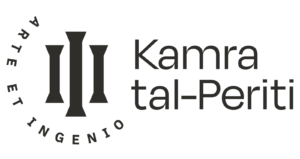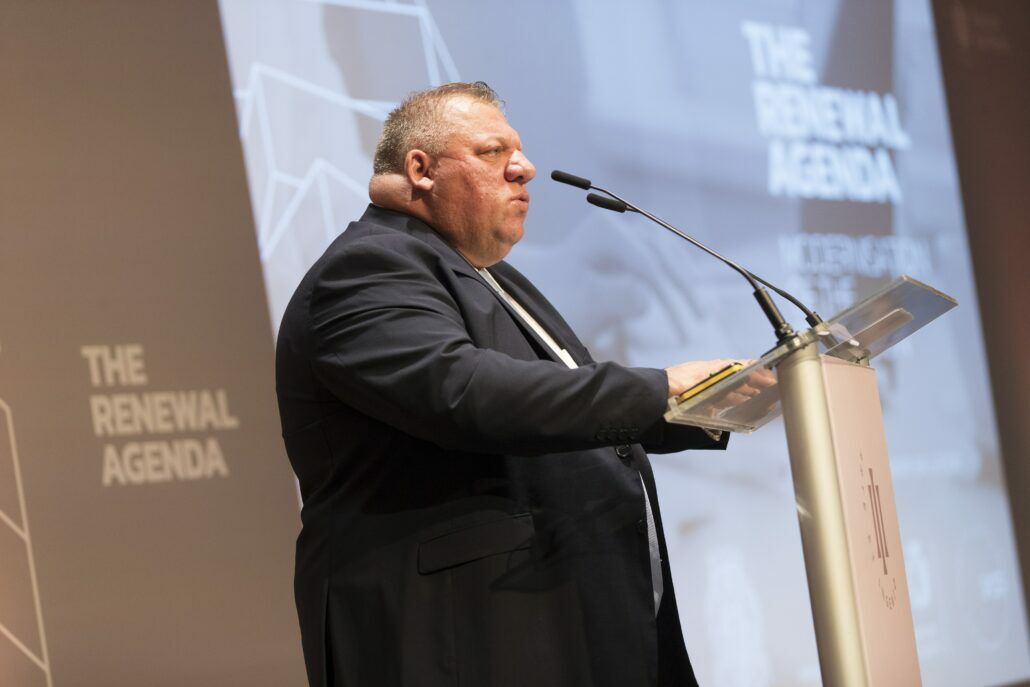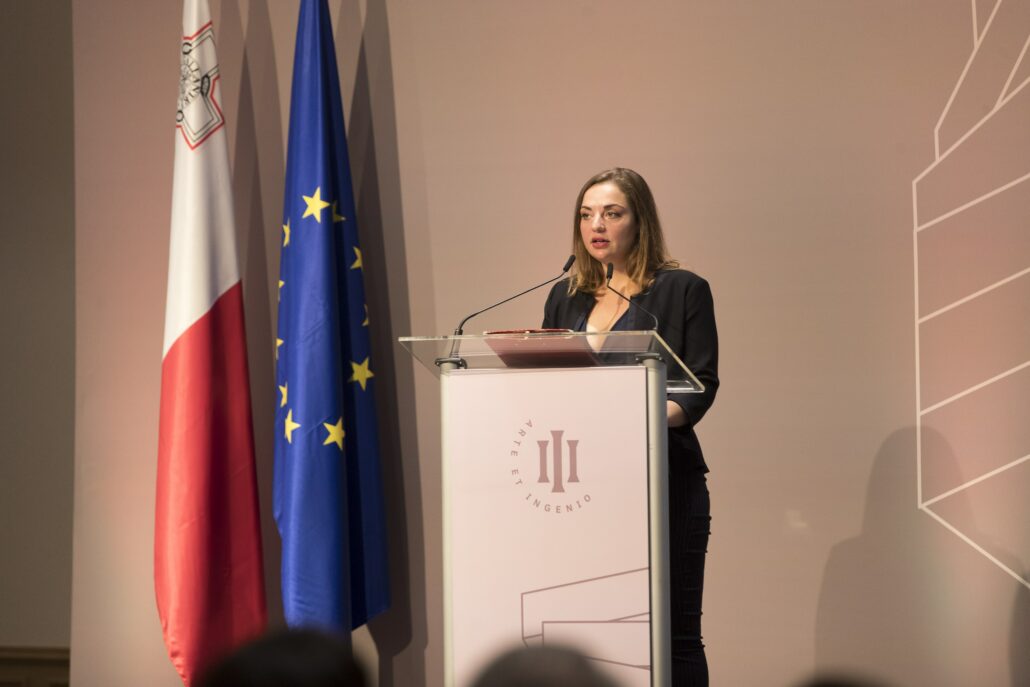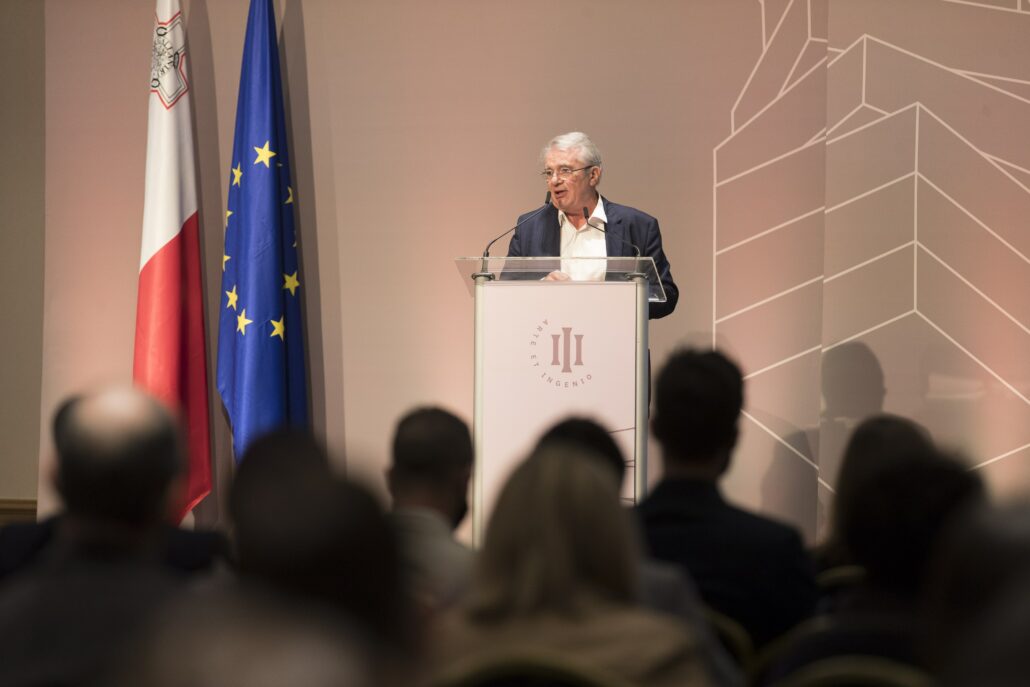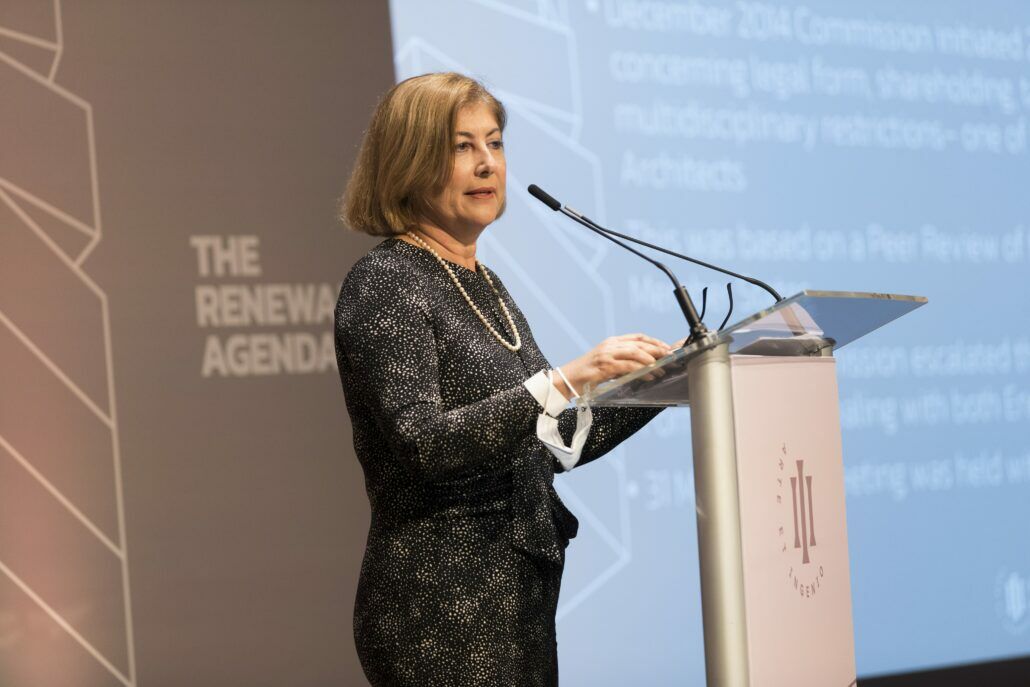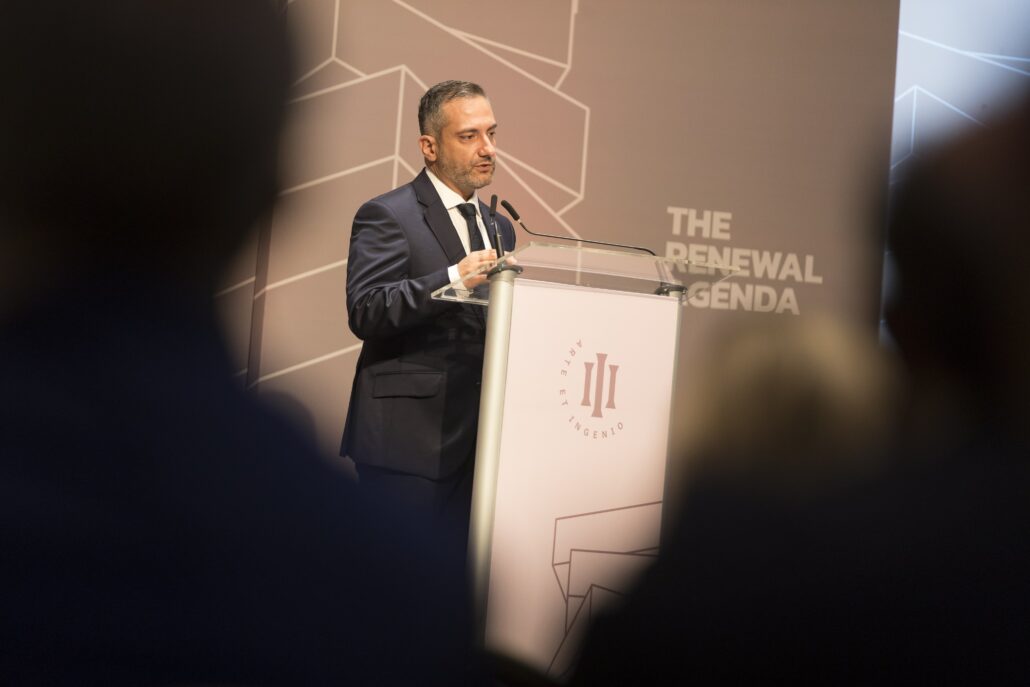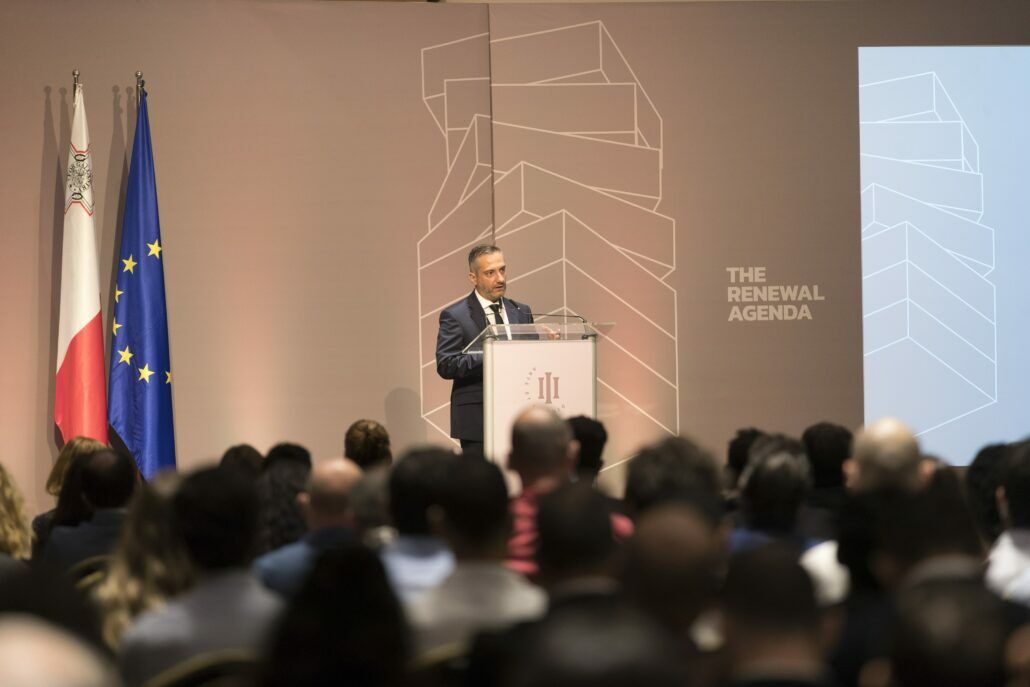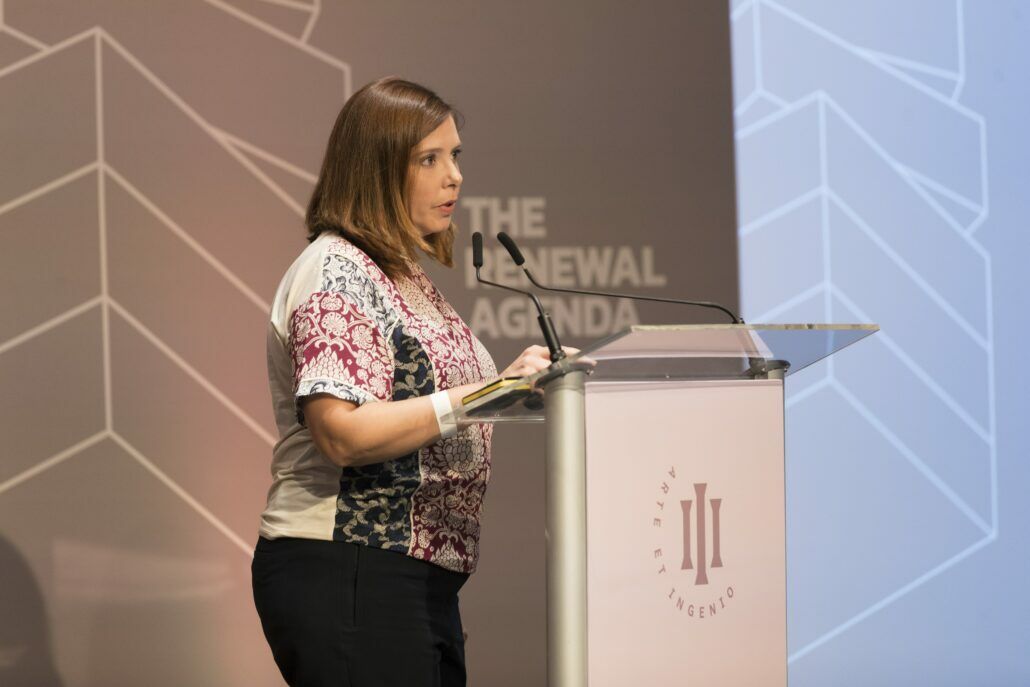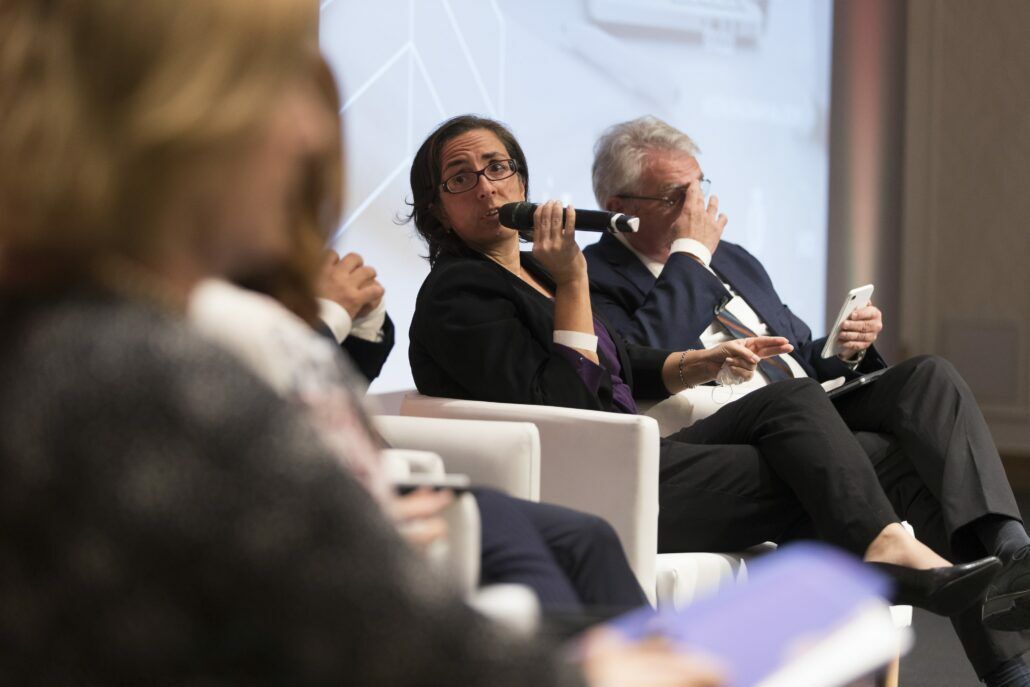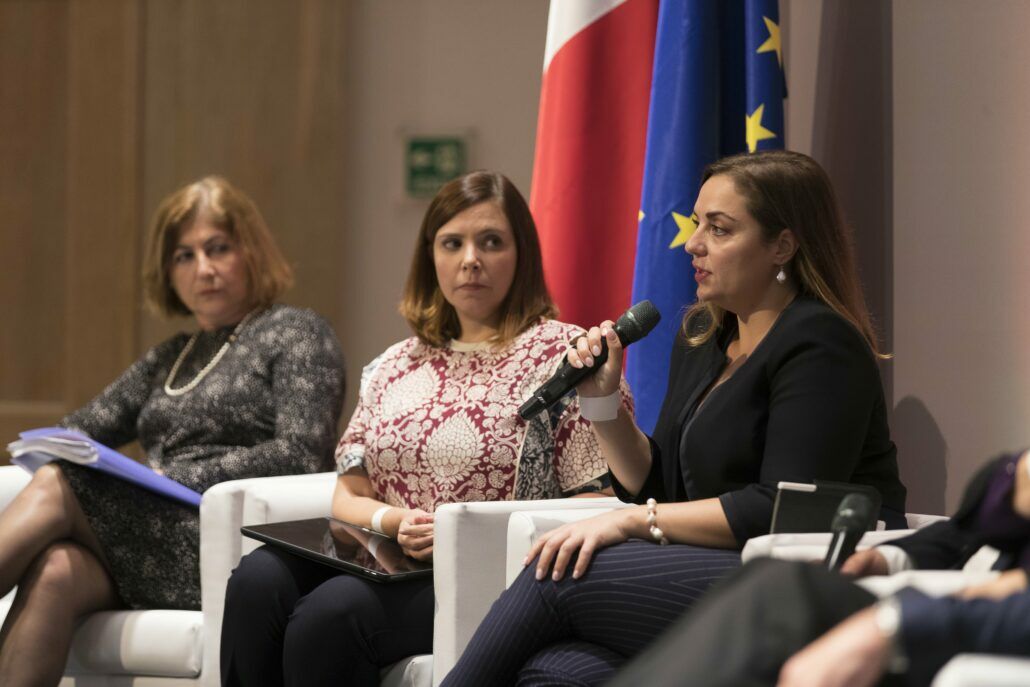Posts
CIR 03/22 | Project Risk Assessment
Further to Section 4 of Circular 01/2022 published on 21st March 2022, the Council is herewith publishing guidance on the preparation of risk assessment reports in support of waiver requests, or to be forwarded to the contractor for the preparation of method statements.
This guidance reorganises the contents of the schedules in Subsidiary Legislation 623.06 (LN 136 of 2019, as amended) such that documentation is drawn up in full compliance with current regulations while ensuring the positions of conflict are avoided.
Once discussions on the overhaul of S.L. 623.06 (LN 136 of 2019, as amended) are concluded and brought into force, it has been agreed with the BCA that the Kamra shall be issuing revised guidance on risk assessment which would not be strictly bound by the aforementioned schedules.
Guidance on
Project Risk Assessment
A comprehensive project risk assessment, drawn up by the perit responsible for the design and specification of engineering works, should include:
1. The identification of the risks involved, after taking account of the structural condition of the construction itself and contiguous buildings, including:
1.1 Description of the structure system used for floors (e.g reinforced concrete slabs, stone slabs on timber beams, concrete frame, etc).
1.2 Description of the structure system used for transmitting vertical load (e.g. masonry walls, concrete columns, foundations, etc).
1.3 Sketch plan of each contiguous building.
2. Where additional construction over an existing building or part thereof is to take place:
2.1Checks showing that any existing floors are capable of sustaining the additional load being imposed by the new construction these should include:
a) an estimate of existing and proposed loads in every floor, and a declaration that the structural elements of each individual floor are capable of sustaining the additional loads when checked in accordance with established codes of practice;
b) a description of any additional reinforcement work that may be necessary in each floor.
2.2 Checks showing that the foundations of the building are capable of sustaining any additional loads placed over the existing storeys. These should include:
a) an estimate of the existing and proposed loads at foundation level;
b) information about the nature of the foundations of the building, including type and dimensions, or where this is not available, a statement about the design assumptions in accordance with codes of practice;
c) information on the nature of the ground, supported by the respective ground investigation reports that shall be attached to the works specifications.
3. Where excavation is to take place:
3.1 A description of the loads acting on the ground within the excavation affected zone, including:
a) Clear identification of the structural system of the building, within this zone, describing how load is transmitted to the
b) An estimate of the load reaching foundation level, in kN/m or
c) Identification of the type and dimensions of foundations within this
d) An estimate of the bearing pressure at foundation level in kN/m² in the case of strip footings, pad footings and raft
3.2 A description of the excavation affected zone, explained schematically inclusive of a dimensioned plan that includes the following:
a) the limits of excavation;
b) the depth of each part of the excavation;
c) the affected zone of the excavation, shown shaded and dimensioned;
d) the properties and buildings belonging to third parties that fall within the affected zone of the
3.3 A description of the ground conditions. This should include the following:
a) identification of ground materials through the geological map of the Maltese Islands;
b) (i) information from any ground investigation reports that fall within the immediate surroundings, specifically within the affected zone; OR
(ii) information from other periti who have built or supervised excavation in the immediate surroundings, after having obtained the necessary consent to use this information; OR
(iii) information from a ground investigation that would need to be commissioned for the proposed project. This investigation shall be carried out from within the site that is to be excavated. In the case of excavations not exceeding 2m in depth, such information may be obtained from trial pits, whereas borehole drilling with full recovery shall be required for all other proposed excavation depths. If agreement is reached with the neighbouring third parties within the affected zone, boreholes shall be drilled, inclined, from within the site that is to be excavated, into the ground beneath the neighbouring third party properties.
3.4 Identification of the risks involved in carrying out the excavation, taking into account the expected strength of the ground materials, the presence or otherwise of fissures, and the loads within the affected
4. Additional Recommendations:
Moreover, the perit responsible for the design and specification of engineering works shall also include in the Project Risk Assessment requirements regarding the content of the method statement/s, including:
4.1 Any recommendations the perit deems necessary regarding the sequence of works to be undertaken on the basis of the risk assessment.
Provided that in the case of excavation, this should include:
a) where the excavation is to be started from;
b) any phasing required to achieve the required rock buttressing;
c) the levels that should be attained in each stage of the
d) Subject to the provisions of the Civil Code (Cap. 16.), where underpinning is to be undertaken, full details of how the underpinning works are to be executed, supported by scaled plans, sections and detailed drawings. A description of how the underpinning works are to be phased in relation to other excavation work needs to be
4.2 Any project-specific measures the perit deems necessary to safeguard the stability of the works being undertaken, the stability of contiguous structures or terrain as the case may be;
4.3 The precautions and safeguards to be adopted, including:
a) against instability of the structure;
b) for parts thereof being demolished or altered;
c) for any contiguous structures;
d) any monitoring readings that are required to be undertaken during demolition and excavation, describing where, how and what is to be measured and what results are to be tolerated prior to taking ulterior
Perit André Pizzuto
President
CIR 01/22 | Updates regarding S.L.623.06 (LN 136 of 2019, as amended)
UPDATED 13/05/2022
The recent changes in the processing of clearance requests filed by periti on behalf of their clients to the BCA have brought to the fore yet again the serious issues related to the Avoidance of Damage to Third Party Property Regulations, S.L.623.06 (LN 136 of 2019, as amended).
Ever since the publication of these regulations in the Government Gazette on 25th June 2019, the Council of the Kamra has never ceased its efforts to have these regulations replaced with a sound suite of regulations that would align our industry with best-practice legislation found in the rest of Europe, in the interest of public safety and quality in the built environment.
Our efforts may not have been visible, and we have been very often restrained in our communication about the extensive discussions happening behind the scenes. This restraint was not because we did not feel the need to keep you updated, but because successful negotiations can only happen when the parties around the table demonstrate good faith and discretion.
Many periti have frequently reached out to the Council privately to express their frustrations or vented their disgruntlement on the Periti Discussion Group on Facebook. We have listened to every word and read every post and comment. We understand what you have been going through because all of us on Council are also in practice and go through the same things you do on a daily basis. We also share your deep concern about how the profession has been abused to make up for the grave shortcomings in the industry and its gross regulatory failures.
These shared concerns motivate the Council to doggedly and incessantly push for regulatory reform, no matter how long it takes or how long-winded the discussions are.
We are now in a position to update you on some of the progress we have made.
1. PROCESSING OF CLEARANCE REQUESTS
On 17th February 2022, when the Council was alerted by members of the profession that significant changes to the processing of commencement/clearance requests had been suddenly brought into force, we requested an urgent meeting with the BCA. After three meetings, lasting approximately 11 hours in total, we have reached an agreement on the new procedures that will be adopted by the BCA on clearance requests going forward.
The new procedures are outlined in the Guidance Note issued by the BCA linked below.
This guidance note reflects several positions the Kamra has been advocating for the past 32 months and 25 days, namely:
- The role of STOs as intended in the regulations, albeit questionable, is to supplement the setup of contractors. Exemption requests for the appointment of STOs should thus be made by contractors since it is their responsibility to appoint them. The perit-in-charge should have no involvement whatsoever in any such exemption requests.
- The provisions of the regulations do not distinguish among projects of differing scale and risk. The full application of the regulations for projects that do not result in any risk to third-parties, such as the removal of surface top-soil or floor build-ups, is excessive and disproportionate.
- Periti should be given the opportunity to exercise their professional judgement in assessing the site-specific risk of each project. Many of the new procedural provisions found in the BCA’s guidance note rely on the risk assessment of the perit-in-charge in determining requests for partial waivers of provisions in the regulations. However, such waiver requests should be filed by the beneficiary of such requests, namely the developer or the contractor, as applicable, and the BCA should make a determination on whether such a waiver request is accepted. Periti should not be compelled to carry liabilities for others.
- There should be a distinction between periti forming part of the design team, and those working in the contractor team. STOs and periti drafting method statements should form part of the latter team. This is clearly inferred in the Guidance Note.
- The BCA is clamping down on the indiscriminate use of regulation 26 to circumvent the regulations altogether. The BCA has presented Council representatives a number of outrageous regulation 26 requests signed by warrant holders that are grossly irresponsible and negligent, and which are bringing the profession into disrepute among BCA officials as a result. Although the BCA has never filed complaints to the Kamra about individual periti, the Council will not hesitate to open conduct cases should complaints filed by the BCA be substantiated.
It is important to also underscore that the negligent behaviour of some periti resulting in insurance claim settlements, is one of the reasons why PII insurance premia continue to rise. It is the Council’s duty to the entire profession to uphold standards to ensure warrant-holders practise professionally at all times.
The requests for waivers under regulation 25 as outlined in the guidance note may be filed in the form of a letter signed by the developer or contractor, as applicable, and submitted together with the risk assessment by the perit who applied for the permit, who would not carry any professional liability for the request. There are no specific forms issued by the BCA envisaged for the filing of such requests.
The Kamra has always discouraged periti from using regulation 26 declarations, and has recommended to periti the use of regulation 25, instead, when appropriate. The BCA has now adopted the Kamra’s position on this matter, as evidenced throughout the guidance note.
The potential implication of regulation 26 declarations, with no review or assessment by the BCA, is that periti signing them may be carrying third-party liability on their own. On the other hand, the fact that regulation 25 waiver requests would necessitate a determination by the BCA and would not bear the signature of the perit-in-charge would ensure that third-party liability would be apportioned in the manner that has long been established by the Civil Code.
Nevertheless, the Kamra has consistently maintained that LN 136 of 2019 (as amended) can only work through exemptions and waivers, making it a deficient piece of legislation that was hastily drafted and must be replaced at the earliest opportunity.
2. AMENDMENTS TO LN 136 OF 2019
The Kamra is engaged in concurrent discussions with the BCA on overhauling the provisions of LN 136 of 2019 to make it work. As you will certainly be aware, the Council had published a redraft in April 2021 which encompassed most of the recommendations found in the Quintano Report. The redraft was circulated among periti and the media for feedback and recommendations.
Securing amendments to LN 136 of 2019 is, of course, an interim solution until a more comprehensive suite of building and construction regulations are published and the licensing of contractors is brought into force. We understand, however, that this process is not envisaged to be completed in the short-term.
Thus, the BCA agreed with the Kamra to undertake immediate discussions on the amendments to the legal notice necessary to address its main deficiencies and eliminate all scenarios that may result in positions of conflict forced upon members of the profession by the regulations themselves.
The objective is to ensure that such amendments are brought into force in the short-term.
3. DIRECTIVE ON PRACTISING ETHICALLY AND PROFESSIONALLY WITHIN THE CONSTRAINTS OF LN 136 OF 2019
As many of you will be aware, the Council organised an Extraordinary General Meeting last December to consult with members of the profession on the principles behind a Directive the Council had drafted. The draft directive’s purpose was to reinforce the separation of the design team and contractor team, and consequently the separation of roles and liabilities of periti within the two distinct teams. Such demarcation will ensure that the confusion about professional liabilities that has arisen since these regulations came into force is addressed, and will provide direction to periti on how to comply with the First Code in the Code of Professional Conduct of Periti (S.L.390.01) governing positions of conflict.
This new Directive, whose principles were unanimously approved by the EGM, will be issued in the very near future.
4. GUIDANCE ON RISK ASSESSMENT
In previous sections of this circular, we have made mention of the requirement for periti-in-charge to draw up risk assessment reports as part of the new waiver procedures.
The Council has prepared guidance on how periti are to undertake a Risk Assessment, extracting those elements from the schedules of LN 136 of 2019 that should be prepared by the perit-in-charge, or a perit within the design team.
Guidance on the preparation of risk assessment can be found in CIR 03/22.
Perit André Pizzuto
President
PR 08/21 | Periti Act to initiate modernisation of the profession
Verżjoni bil-Malti
On Friday, the Kamra tal-Periti, in collaboration with the Ministry for Transport, Infrastructure and Capital Projects and SACES, organised a conference entitled The Renewal Agenda: Modernisation of the Profession. The event follows the unanimous approval by Parliament, earlier this year, of the new Periti Act: a historic milestone that marks the culmination of a 14 year-long wait.
The Council and the Ministry have now concluded the first tranche of subsidiary legislation necessary to bring several provisions of the act into force, and the transition from the old to the new Periti Act will begin in the coming weeks. This will initiate a long-awaited process of renewal of the profession, with far-reaching effects that will change the way it is structured, as well as the role of the Kamra, the way warrants are conferred, and new obligations on Periti.
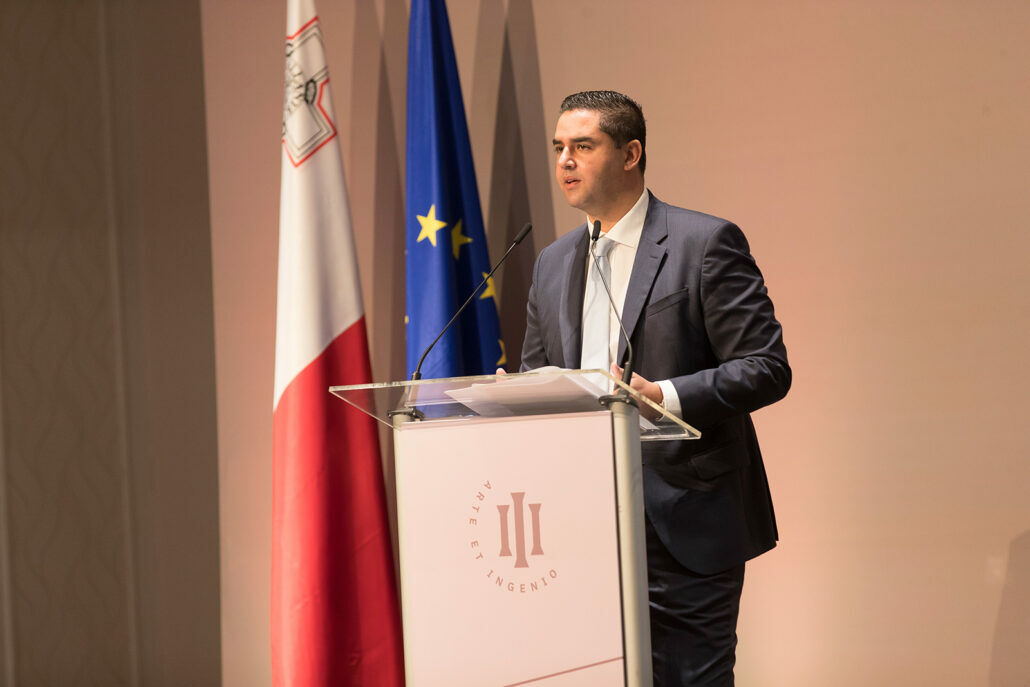
Dr Ian Borg, Minister for Transport, Infrastructure and Capital Projects, outlined the importance of the new Periti Act, which was the result of intense hard work and perseverance, and how it will facilitate the modernisation of the profession for the benefit of the public.
“We introduced provisions that give a broader sense of legal certainty, accountability, security and transparency in the building and construction industry,” Minister Borg said.
He also emphasised how the new Act is underpinned by the value of striving for quality. “It was time to raise the bar even higher and through the amendments made in the new Act we are promising a more qualitative profession with the highest skilled people.”
The subsidiary legislation, which will be brought into effect in the coming weeks, will bring Malta in line with European Directives concerning the performance of the service of architects and civil engineers in Member States. One of the main benefits of this is that the local professional will become recognised on the same level as European counterparts.
Minister Borg concluded his address by announcing that his Ministry is in advanced talks with the Kamra to allocate funds to build a new digital platform whereby new procedures that will be in place in the coming months can be carried out efficiently and securely. He also pledged his commitment to continue supporting the Kamra and the profession to improve the quality of the built environment and meet the ambitious goals that Government has set regarding the environment and climate change, in achieving which periti will play a crucial role.
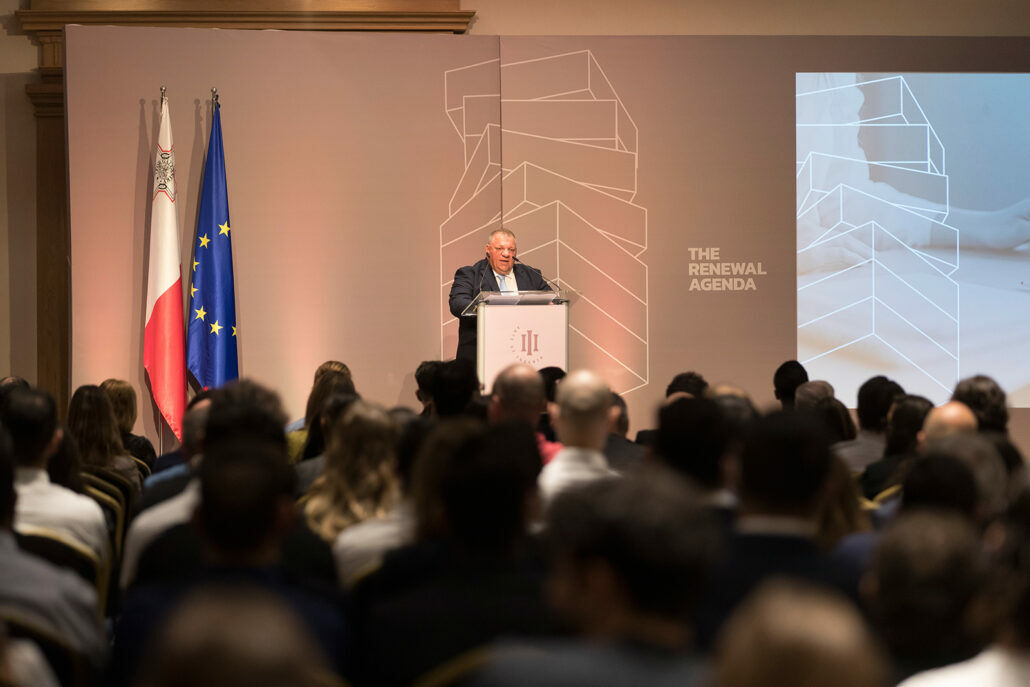
Perit Toni Bezzina, Opposition Spokesperson for Transport and Infrastructure, emphasised the bipartisan nature of the Parliamentary process leading to the approval of the new Periti Act. “We should be truly proud of the political maturity we have displayed in reaching this important milestone,” Bezzina remarked.
Bezzina pointed at the strengthening of the role of the Kamra tal-Periti which, for the past century, has given the highest level of service to the Maltese population. Bezzina went on to state that with the increased responsibility of the Kamra tal-Periti, it can no longer function on a voluntary basis.
“The Opposition recognises the new roles the Kamra was conferred in the law and will thus be ensuring that the Kamra has all the necessary resources to fulfil its new regulatory functions for the benefit of the profession itself, but also for the benefit of all Maltese citizens.”
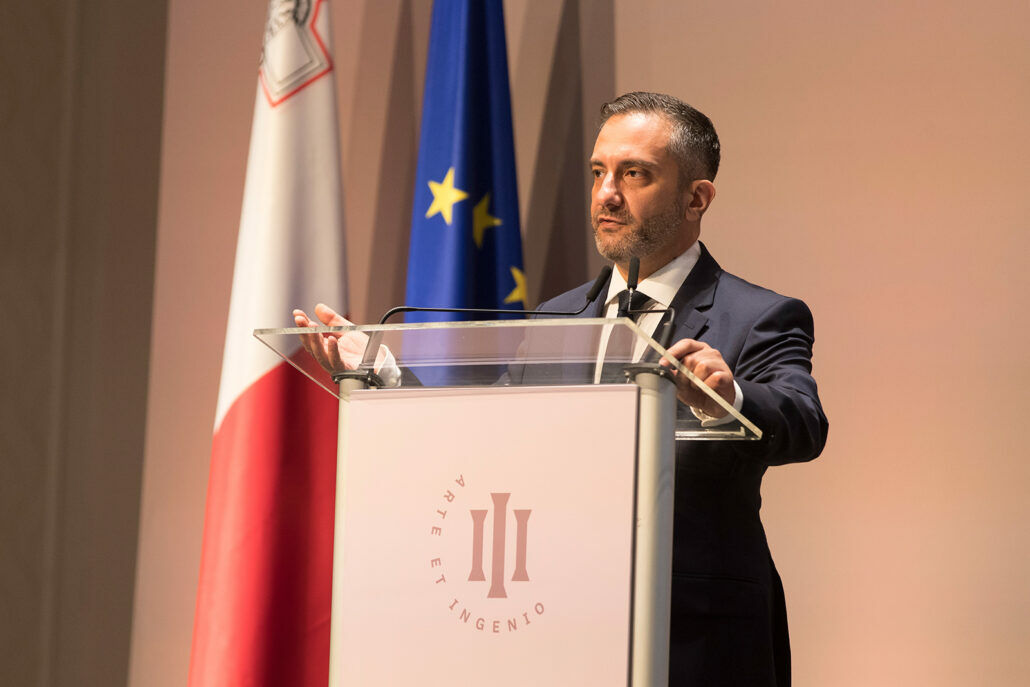
In his welcome address, KTP President Perit Andre Pizzuto stated that the need for the renewal of the profession, the construction industry and Malta’s built environment has long been the focus of the Kamra, albeit largely ignored.
He welcomed the fact that political leaders are recognising the need to address the concerns that are adversely affecting quality of life, such as the erosion of the quality of our built environment, the loss of our cultural heritage, the need to introduce proper building and construction regulations, and the need to protect our environment.
Pizzuto explained that renewal is a process that requires a plan with a sequence of coordinated initiatives whose overarching objective keeps in focus the betterment of the profession, the industry and our built environment.
“The Kamra’s renewal agenda begins with the modernisation of the profession,” he remarked.
Pizzuto stated that the Kamra too needed to modernise, not just because of the legislative changes that are being brought about, but also to reflect the values that embody the profession today, while remaining mindful of its legacy.
To mark the beginning of the renewal process, Pizzuto unveiled the Kamra’s new brand identity.
“The Kamra’s new identity, featuring the three pillars of sustainability, reflects the social and cultural aspirations of today, and will serve as a constant reminder for the profession of its responsibility to promote sustainable development that strikes a balance between the economic, social and environmental needs of the country by harnessing and employing its creative and technical competences,” Pizzuto concluded.
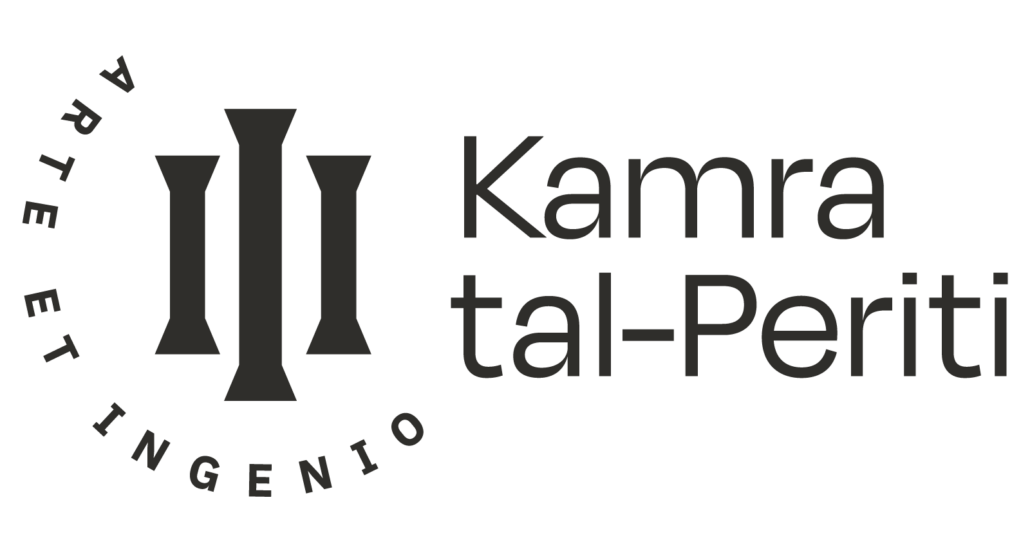
Later in the conference, Pizzuto provided an in-depth review of the changes that will be brought into force with the first tranche of subsidiary legislation.
Presentations on the context that gave rise to the need for the new Act were given by Perit Simone Vella Lenicker, Past President KTP, Prof Alex Torpiano, Dean of the Faculty for the Built Environment, and Ms Lucienne Meilak, Director of the Policy Development and Programme Implementation Directorate at MTIP, who played a key role in the drafting and approval of the Act.
Perit Dr Amber Wismayer, Vice President and Hon. Secretary, KTP, and Perit Dr Jeanette Muñoz Abela, Council Member, KTP, also gave interventions on specific innovations of the Act.
PR 07/21 | Perit Dr Jeanette Muñoz Abela elected to European Council of Civil Engineers Executive Board
Perit Dr Jeanette Muñoz Abela was elected to the Executive Board of the European Council of Civil Engineers at the 73rd ECCE General Meeting held on 23rd October 2021.
Dr Muñoz Abela serves as council member of the Kamra tal-Periti (KTP) since 2016 where she acts as its representative on the European Council of Civil Engineers (ECCE), Fédération Européenne d’Associations Nationales d’Ingénieurs (FEANI) and Inġiniera Malta in their General Assemblies as well as a member of the Union Internationale des Architects (UIA) Committee “International Women in Architecture”.
She was also appointed as the Chair of the Permanent Committee on Engineering of the Kamra tal-Periti and is the national representative of the International Association of Bridge and Structural Engineering (IABSE).
Dr Muñoz Abela is also a lecturer at the University of Malta within the Faculty for the Built Environment and sits on the University Senate (2019-2021), the Faculty Board (2019 – to date) and the Doctoral Committee (2019 – to date).
The Kamra tal-Periti warmly congratulates Dr Jeanette Muñoz Abela on her achievement.
The Kamra tal-Periti would also like to congratulate Dipl. Ing Andreas Brandner on becoming the new president of the European Council of Civil Engineers while expressing thanks and appreciation to Ing. Aris Chatzidakis for his work during the last three years.
The new ECCE Executive Board is composed as follows:
| Andreas Brandner | President | Austria |
| Aris Chatzidakis | Immediate Past President | Greece |
| Platonas Stylianou | Vice President / President Elect | Cyprus |
| Helena Endriksone | Vice President / Treasurer | Latvia |
| Paul Coughlan | Executive Board Member | U.K. |
| Jeanette Muñoz Abela | Executive Board Member | Malta |
| Olga Radulovic | Executive Board Member | Montenegro |
| Dimitar Natchev | Executive Board Member | Bulgaria |
PR 06/21 | Human decency before profit
The construction industry has hit yet another low today should reports carried in the local press be confirmed regarding an as-yet unnamed contractor having unceremoniously dumped a seriously injured worker on the side of a deserted road.
As we discuss ambitious climate change targets, low carbon strategy, and the New Bauhaus Initiative, this incident is a stark reminder that some industry operators are yet to reach basic levels of responsible behaviour grounded in humanity and compassion.
Until contractors are required to possess a licence to operate, which among other things would ensure that they adhere to construction regulations and provide lawful employment, we will never make the quality leap we require. With a licensing regime finally in place, it would be expected that such a contractor would lose said licence and would be unable to operate again should such allegations be confirmed.
The Kamra tal-Periti is aware that the discussion on draft regulations on the licensing of contractors are scheduled to resume at BICC shortly, after having been on hold since May 2019. The Kamra shall be insisting that the new licensing regulations include provisions sanctioning or barring any contractors who were found to be responsible for serious injury or the loss of life of their workmen or neighbours through negligence prior to their coming into force.
The industry must send a strong signal to “cowboy” operators that all its main stakeholders shall adopt a zero-tolerance policy towards behaviour which is inhumane, exploitative, and negligent to its labour force.
PR 05/21 | The revocation of warrants on criminal conviction and the role of the Kamra tal-Periti
Following the reading of Magistrate Mifsud’s sentence regarding the role of Perit Roderick Camilleri and Perit Anthony Mangion in the tragic death of Miriam Pace, it is pertinent to inform the public about relevant aspects of the law and the role of the Kamra tal-Periti in this regard.
Suspension or Revocation of Warrants and Memberships
The most frequent question that the Kamra is receiving from media houses is whether the convicted periti are members of the Kamra and, if so, whether it intends suspending their membership. There are a number of points that need to be clarified for the benefit of the public on this point:
1. The Kamra is not an association, a club or a union for architects and civil engineers. It is set up by Law as a regulating body of the profession and to act as an official consultant to the State on matters related to the industry.
2. All members of the profession form part of the Kamra tal-Periti automatically, are subject to its disciplinary procedures, and are obliged to follow its directives and code of conduct.
3. Expulsion from the Kamra would entail expulsion from the profession. Such an expulsion can only happen following the suspension or revocation of a perit’s warrant in accordance with the law. It is indeed the Council’s role to investigate any misconduct of periti and to establish adequate disciplinary measures that may be necessary to protect the public and the reputation of the profession. With the passing of the new Periti Act, the Council will also have the power, after carrying out an investigation, to delegate the conduct of the disciplinary hearings to a Periti Professional Conduct Board.
4. Any disciplinary decision of the Council of the Kamra can be appealed before the Court of Appeal, and thus the Council acts as a quasi-judicial body. In this respect, the Council is obliged to adhere to the principles of natural justice enshrined in the Constitution. These include the right to a fair hearing. Failure to abide by these principles would invalidate any disciplinary decision of the Kamra tal-Periti on appeal.
5. To ensure a fair hearing, the Kamra cannot pronounce itself publicly on the merits of a case until its disciplinary proceedings are finalised. If it does, it would prejudice the relative conduct proceedings.
6. It is also pertinent to point out that a perit can lose his or her warrant in one of two ways:
- Through a decision of the Council, and eventually of the Professional Conduct Board; or
- Through a criminal conviction with a prison term of at least one year, even if suspended.
In the latter case, the revocation would be automatic and would not require a specific pronouncement on this point in the judgement.
The role of the Periti Warranting Board is to execute the Council’s or the Court’s decision, as applicable, and has no discretionary powers on these matters.
7. One of the principles of natural justice is non bis in idem; i.e., no legal action can be instituted twice for the same cause of action. In view of this, the Council was unable to proceed with its investigation given that the specific charges were not made known to the Kamra until today.
8. In March 2021, the Court had denied the Kamra’s request to be granted special access to the magisterial inquiry to extract any relevant information for its disciplinary investigation.
9. The Kamra cannot take any ulterior disciplinary measures on points already decided upon by the Criminal Court, as confirmed by its legal consultants and the Office of the Attorney General.
What happens next?
The two investigations which had been hitherto suspended due to the criminal proceedings, will be reopened by the Council to determine the following points:
- Establish whether the prosecution or the convicted parties will file an appeal against the judgement. If so, the Council will need to await its outcome and proceed accordingly;
- Analyse the charges and judgement to establish whether there are any disciplinary merits not covered by the criminal case, including breach of the code of conduct, breach of a directive of the Kamra, professional misconduct or negligence, and bringing the profession into disrepute.
Beyond the merits of the criminal and disciplinary proceedings, the testimony brought before the Criminal Court, particularly that of the Court-appointed experts, has exposed serious flaws within the regulation of the industry that need to be addressed in earnest and with competence. The Kamra shall also continue monitoring the criminal proceedings instituted against the contractor and the worker involved to determine whether they bring to the fore any further systemic failures within the existing chaotic regulatory framework governing the industry.
The Kamra has been campaigning on the need for reforms for several years, and has indeed published its own detailed proposals for reform in May 2019 in line with its legal and moral obligations to advise the State on how best to safeguard the public interest.
More recently, it launched a public consultation on its redraft of the infamous Legal Notice 136 of 2019, which was heavily criticised during the criminal proceedings, and shall shortly be publishing the final amended version having taken on board the feedback it received.
Revision of Avoidance of Damage to Third Party Property Regulations – Public Consultation
The Kamra tal-Periti has drafted a revision to LN 136 of 2019 – Avoidance of Damage to Third Party Property Regulations – which seeks to address all the recommendations of the Building Industry Technical Committee’s report dated April 2020 and tabled in Parliament by the Prime Minister on 20th January 2021.
The main features of this redraft include:
- The distinction between works specifications and method statements
- The revision of the role and qualifications of Site Technical Officers
- The elimination of provisions that place periti in positions of conflict of interest by having more than one employer
- The distinction between tortious and contractual liability, facilitating immediate compensation of damages to third-parties
- The introduction of an equitable system for reimbursement of expenses incurred by third parties in reviewing project documentation
The proposed regulations are intended to be brought into force in the short-term, until more comprehensive and better structured building and construction regulations, and the equivalent of the UK’s Party Wall Act are brought into force.
Members of the profession and the public are welcome to submit their feedback on info@kamratalperiti.org by Friday 30th April 2021 at 6pm.
PR 03/21 | KTP welcomes the passing of the Periti Act and BCA Act by Parliament
The Kamra tal-Periti is deeply satisfied that after an interminable struggle lasting fourteen years and spanning five administrations, the law regulating the profession of periti has been unanimously approved in Parliament yesterday evening.
The new Periti Act will allow for a long-overdue modernisation of the profession and the strengthening of the Kamra’s role in regulating the profession.
One of the main the changes the new Act will bring about is the introduction of Certificates to Practise issued annually by the Kamra to warrant holders providing services to the public and therefore carrying liability for their services. The issuance of Certificates to Practise will be conditional to warrant holders possessing professional indemnity insurance or another form of adequate protective cover and minimum continuous professional development training. The possessors of the Certificate to Practise, whether in the private or public sector, will also be issued with an official professional stamp as a mark of recognition for their clients, and public and private institutions receiving official documentation from periti. This reform will serve to raise the bar and professionalism of warrant holders to the benefit of the wider public and the profession itself.
Another key change is the introduction of two lists within the warrant of Periti – the Perit Arkitett and Periti Inġiniera Ċivili. Apart from addressing infringement procedures opened by the European Commission against Malta about the previous Periti Act, this innovation creates a distinction between the professional qualification routes for architects and civil engineers and marks the beginning of a transition from generalists to specialists in various fields of practice. This distinction is expected to greatly benefit the quality of our built environment and the quality of construction.
Of great importance to the Kamra, of course, is the consolidation of the Kamra’s role as the regulator and sole representative body of periti in Malta. It also introduces the Periti Professional Conduct Board, a new body to which professional conduct cases can be delegated by the Council of the Kamra to improve its efficiency and guarantee a speedier due process for all parties concerned.
This Act was passed during the Kamra’s centenary year. It was indeed just over a hundred years ago, as the country was exiting another pandemic, that the Kamra was set up following a spate of building collapses. The Kamra has evolved over the past one hundred years but remains a widely trusted and respected institution that not only looks after the interests of the profession but also seeks to protect the common good in all its efforts.
With the passing of this Act, the Kamra is now in a position to gradually begin rolling out long-overdue reforms within the profession that depended on the new Periti Act. These reforms will bring the profession firmly into the 21st Century. It will also help begin to address the serious problems within the construction industry and our built environment.
The Kamra tal-Periti also strongly welcomes the concurrent passing of the Building and Construction Authority Act. While the Periti Act and the Kamra tal-Periti will serve to underpin the reform of the building and construction industry, this new authority will serve as its foundation.
Most of the concerns raised by the Kamra in recent weeks about the Bill have been addressed in Parliament through amendments brought forward by Government and Opposition.
There is still a significant amount of work to be done to align Malta’s building and construction industry with that of our European partners. However, the Kamra remains resolved to support Government in the drafting of regulations and their implementation to ensure that the public’s health and safety and quality of life are not only protected but enhanced.
Events
Nothing Found
Sorry, no posts matched your criteria
Affiliations
The Kamra tal-Periti is affiliated with the Architects' Council of Europe (ACE), European Council of Civil Engineers (ECCE), Union International des Architects (UIA), Union of Mediterranean Architects (UMAR), Commonwealth Architects Association (CAA), and the Malta Federation of Professional Associations (MFPA).
Contact Us
Kamra tal-Periti
The Professional Centre
127, Sliema Road
Gzira GZR 1633
Malta
+356 2131 4265
info@kamratalperiti.org
Office Opening Hours
Mon-Fri: 8:00am - 11:00am
